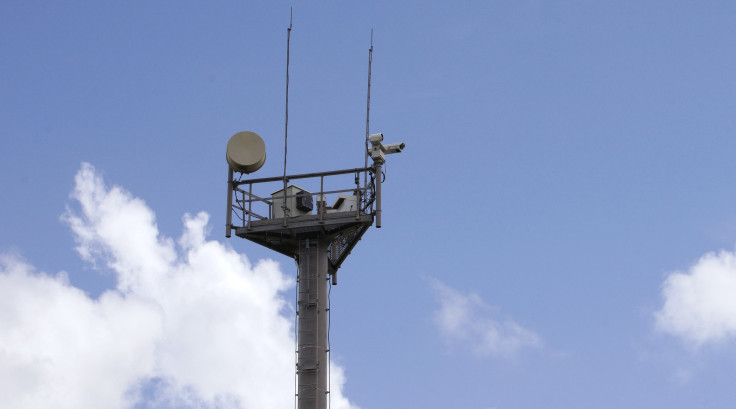US Border Patrol Installs Illegal Immigration Surveillance Towers In Arizona, Report Says

An ambitious border patrol strategy is finally off the ground in Arizona as the U.S. Customs and Border Protection agency this week installed the first set of surveillance towers to aid agents in apprehending undocumented immigrants and drug smugglers at the U.S.-Mexico border. Seven of a planned 52 integrated fixed towers are now functional in Nogales, Arizona, just across from Mexico, teleSUR reported.
The towers are solar-powered, approximately 80 feet tall and equipped with radar and day- and night-cameras. The surveillance technology allows agents to see real-time video footage at Border Patrol command posts. Border Patrol agents previously used a combination of ground sensors, long-range night-vision telescopes, binoculars and towers, some with and some without radar capabilities.
Jose Verdugo, a Border Patrol agent at the Nogales command post, told teleSUR the towers will allow officials to “see in areas we weren’t able to see before.” Migrants “still try to hunch down low, roll across the road, [and] find our blind spots,” even with the cameras, he added.
The project, part of the federal agency’s Arizona Border Surveillance Technology Plan, was designed to decrease the number of undocumented immigrants and drug smugglers who exploit the sparsely guarded and porous areas of the state’s border with Mexico. The tower installations come amid conflicting reports about the number of migrants arriving at the border.
The Department of Homeland Security revealed last week the number of migrants apprehended at the border in 2015 had fallen by 30 percent to 337,000, compared to 486,000 in 2014, teleSUR said. In October, Border Patrol said it caught 5,000 unaccompanied minors crossing the border from Central American countries, including Guatemala, Honduras and El Salvador. That’s nearly double the figure from the same period last year.
Plans for the towers were announced in 2011, but have been delayed by the government’s cancellation of a $1 billion program that sought to install a fence along the entire U.S. border with Mexico. The Arizona portion is now set to be fully operational by 2020.
© Copyright IBTimes 2024. All rights reserved.






















